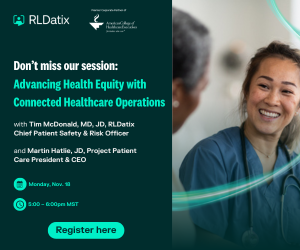
- Communication Builds Trust During Cyber Incidents
- Members in the News: Safe Staffing Through New Models of Care
- ACHE Would Like Your Input on Our New Strategic Plan
- The Road to Patient-Centered Care
- Indigenous Peoples Day: A Rich History in Alaska Native Healthcare
- CMS Releases Final Guidance for Second Cycle of Historic Medicare Drug Price Negotiation Program
Communication Builds Trust During Cyber Incidents
The ability to mitigate the impact of cyberattacks and resume normal operations is critical, say experts, who offer their recommendations for effective communication throughout a cyberattack crisis in the current issue of Healthcare Executive.
Ransomware and hacking are the primary cyberthreats to healthcare, with a 256% increase in large breaches during the past five years, according to the Department of Health and Human Services Office for Civil Rights.
Care quality and revenues often are threatened when cyberattacks occur because functionality can come to a halt. The cyberattack to Change Healthcare that occurred in February knocked the company offline, creating a backlog of unpaid claims, according to the U.S. Committee on Energy and Commerce.
Michael Mayo, DHA, FACHE, president and CEO of Baptist Health, Jacksonville, Fla., says it is of utmost importance in disaster situations to communicate regularly and effectively with the workforce, patients and community. It’s “another way to help build trust with the people we serve.”
“Transparency and timely communications about what is going on are very much appreciated by everyone whose data may be impacted or people in the community that may be concerned,” adds Lee Kim, senior principal, cyber security and privacy for HIMSS.
Healthcare organizations may be hesitant to talk about how a cyberattack occurred and the impacts, but sharing experiences creates resiliency. “It’s not just cyberattacks that can cause disruptions but also IT events, natural disasters, insider threat activity and other things,” says Kim.
Read “Communicating Through a Cybersecurity Crisis” and more at HealthcareExecutive.org.
Members in the News: Safe Staffing Through New Models of Care
Kathleen D. Sanford, DBA, RN, FAAN, FACHE, executive vice president/CNO, CommonSpirit, Englewood, Colo.; and Gay L. Landstrom PhD, RN, FAAN, FACHE, senior vice president/CNO, Trinity Health, Warren, Mich., were featured in ScienceDirect for their article: “Safe Staffing Through New Models of Care.” They write that clinical organizations must innovate by implementing and testing new models of care that use both virtual and onsite nurses and other team members. Read their article here.
To read about your peers making headlines, visit ACHE’s Members in the News.
ACHE Would Like Your Input on Our New Strategic Plan
ACHE’s Strategic Plan is designed to leverage ACHE’s role in building a leadership workforce capable of addressing the challenges facing our field now and in the future. The plan builds on the hallmarks of our commitments to integrity, lifelong learning, leadership, and diversity and inclusion, and amplifies our aspirations in service to our members, our profession and our field.
ACHE Board of Governors annually examines its Strategic Plan with a continuing focus on meeting the evolving needs of our members and the healthcare field. In 2024, the Board of Governors engaged in a “deep dive process” with The Chartis Group, LLC to create a new strategic plan that ensures ACHE remains relevant to leaders.
The draft 2025–2027 Strategic Plan and Map focuses on ACHE’s work to advance and innovate health while driving toward safety and health equity, grow and strengthen our professional community of leaders while providing value nationally and locally, and expand our reach and impact by helping leaders reach their highest potential.
The plan is meant to be dynamic, ensuring its ongoing relevance. The Board will measure our progress toward achieving our strategic imperatives by monitoring key metrics within each of these areas and adjust the plan as we learn how to best fulfill our vision and mission.
If you would like to provide your feedback, please take a moment to review the draft 2025–2027 Strategic Plan and Map and send us your thoughts, comments and ideas for improvement. Please direct your email response to the ACHE Executive Office at strategicplan@ache.org. The deadline for comments is Nov. 13, 2024.
The Road to Patient-Centered Care
In The Patient’s Primary Care Experience: A Road Map to Powerful Partnerships, Mary-Ellen Piche, LFACHE, and Gina Luna examine the factors that are driving the future of primary care delivery. In Chapter 1, “The Evolving Landscape of Primary Care,” the authors address the Patient-Centered Medical Home model, which emphasizes team-based care, communication and coordination. The PCMH model is designed to improve quality and reduce fragmentation, leading to improved care.
This model is acknowledged by payers as a hallmark of high-quality care because it means an organization is providing patient-centered care that is associated with better outcomes, greater patient satisfaction and fewer ED visits. PCMHs are also associated with greater staff satisfaction. As a result, many payers provide incentives to organization using this model.
Chapter 1 examines the evidence to support this model and the factors required to help implement this model, including leadership competencies and change management techniques. This month, chapter 1 of The Patient’s Primary Care Experience, is complimentary for ACHE members.
We hope you enjoy this Monthly Membership Perk, and we thank you for being a part of the ACHE community.
Indigenous Peoples Day: A Rich History in Alaska Native Healthcare
As a child, Jason Hart, FACHE—an Ahtna Athabascan and Menominee Indian—felt ashamed of his Indigenous heritage due to prejudiced commentary and an uninformed stigma about his people. As he matured, Hart, senior director, Multi-Specialty Clinics and Medical Staff Office, Alaska Native Tribal Health Consortium, Anchorage, Alaska, realized he had many reasons to be proud of his Indigenous heritage, including the work his organization has accomplished.
In an ACHE Blog post written in recognition of Indigenous Peoples Day, Oct. 10, Hart, who was a 2022 Thomas C. Dolan Career Accelerator Program scholar, writes about the important work ANTHC has done to provide temporary housing for patients who have to travel to Anchorage for care, but have nowhere to stay.
Statewide, the consortium has also supported patients in their home communities through water and wastewater projects, for example. “ANTHC’s strengths are rooted in Alaska Native people, culture and values,” he writes.
“As you observe Indigenous Peoples Day, I hope you learn to recognize the richness and strengths of Indigenous cultures on the lands where you live and work,” Hart writes.
CMS Releases Final Guidance for Second Cycle of Historic Medicare Drug Price Negotiation Program
As part of the continued implementation of the Inflation Reduction Act, HHS, through CMS, released final guidance outlining the process for the second cycle of negotiations under the Medicare Drug Price Negotiation Program. The guidance also explains how CMS will help ensure people with Medicare can access drugs at the negotiated prices from the first and second cycles when those prices become effective beginning in 2026 and 2027, respectively. For more information, read the full press release and see the accompanying fact sheet.



